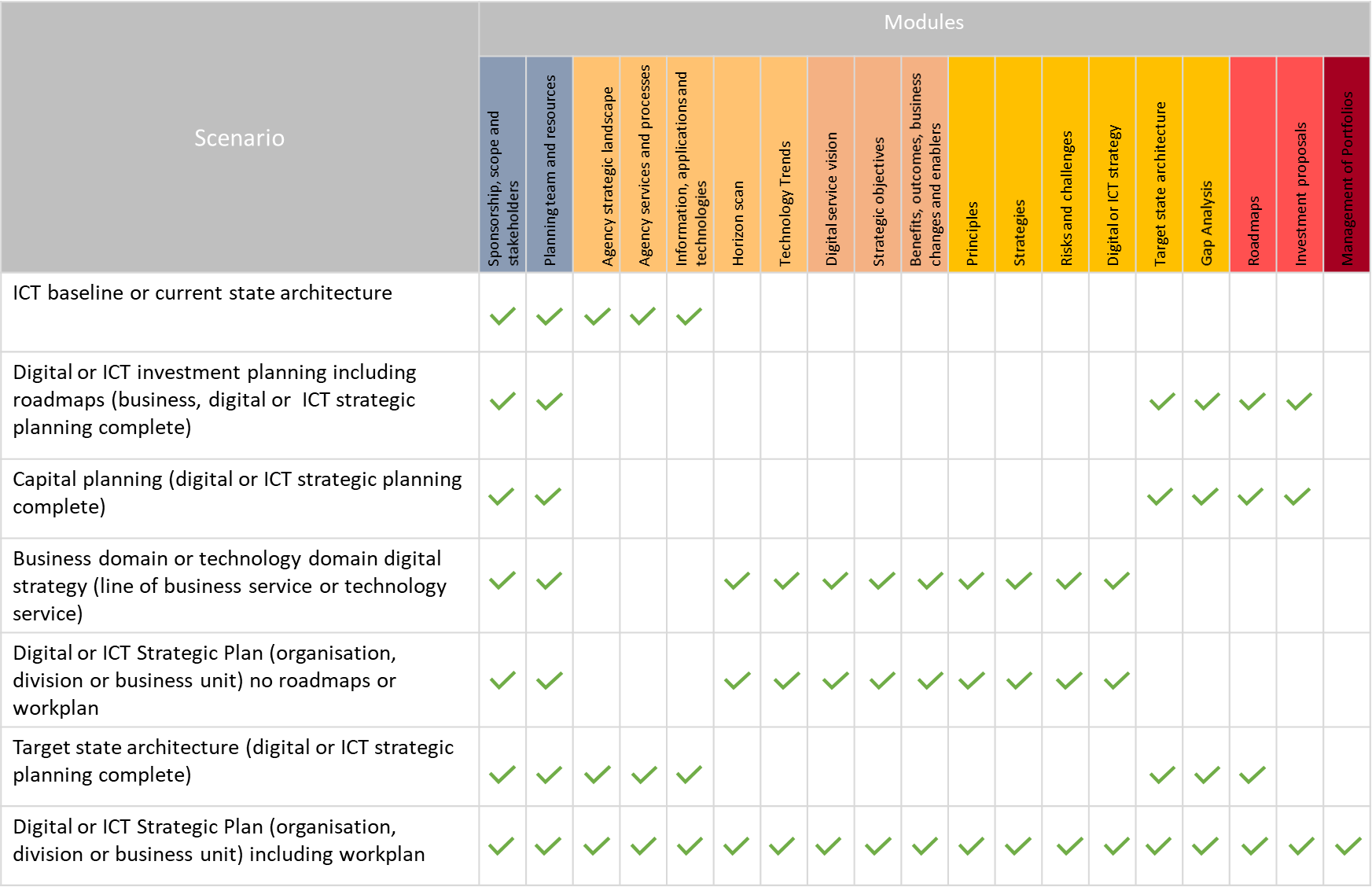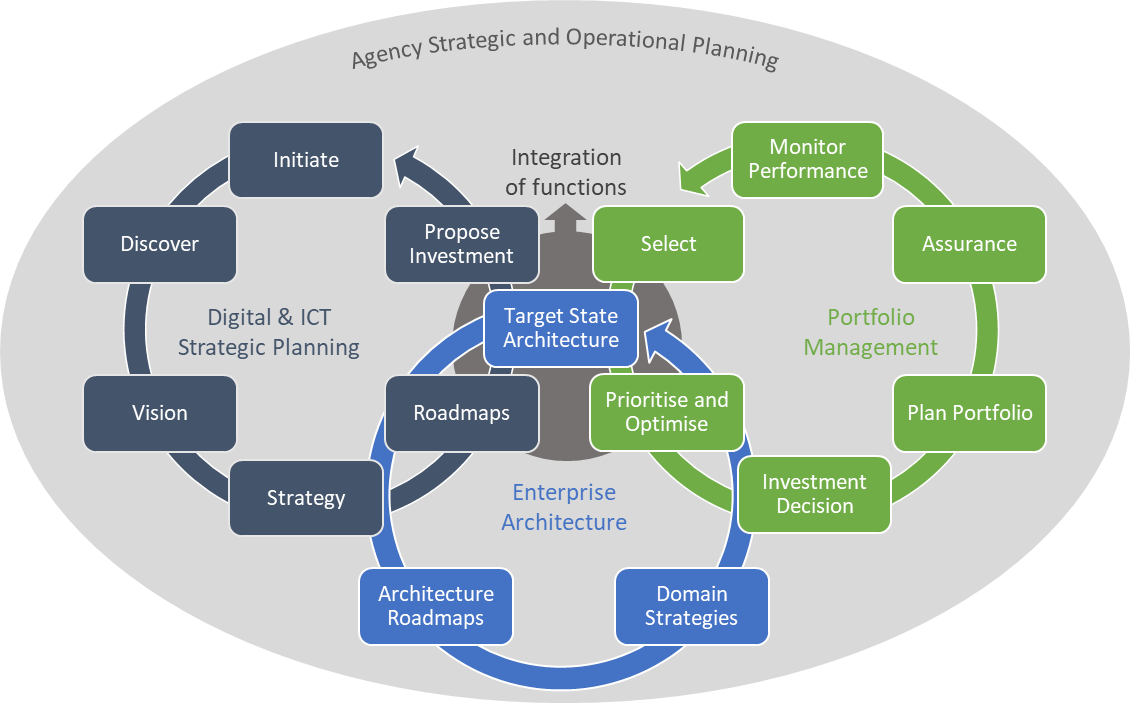The number and types of roles needed to conduct a planning engagement will depend on the scope and nature of the planning work you’re conducting.
Integrated planning approaches using cross functional teams across the disciplines of strategic planning, digital and ICT strategic planning, workforce planning, enterprise architecture as well as investment and portfolio management are recommended. Some of the roles you should consider when establishing a cross functional planning team, and their contribution to the digital and ICT strategic planning process, are outlined below.
Strategic planning
Responsible for engaging with representatives from the business to determine the overall strategic drivers, vision, objectives, strategies as well as high-level outcomes and benefits.
Assists the business representatives to understand the digital or ICT capability required and how it is used in the transformation of services.
Assists the business representatives to initially prioritise the capability required and helps shape an initial view of the areas in investment required over time.
Develops the overall strategy in collaboration with the business representatives.
Roles to be considered
- Agency and service strategic planners.
- Digital and ICT strategic planners.
- Business analysts.
Technology or digital capability
Translates the business, digital or ICT capability required into a target state architecture and roadmap.
Role to be considered
Information management
Helps the business representatives to identify potential information gaps, improvement opportunities and risks.
Works with enterprise architects to develop an information target state architecture and roadmap in line with the digital or ICT roadmap.
Roles to be considered
- Information managers.
- Strategic information managers.
Information security
Assists the business to identify risks to the confidentiality, integrity and availability of information and information assets.
Roles to be considered
- Information security managers.
- Security architects.
Workforce planning
Helps the business representatives identify potential workforce gaps as well as future roles that might be in demand.
Works with strategic planning specialists to identify future trends in workforce transformation as a result of technology transformation. Identifies the future roles and skills that will be increasingly important to the organisation as well as the strategies required to take advantage of opportunities in the workforce.
Roles to be considered
- Human resource specialists.
- Workforce planners.
ICT investment and portfolio
Works with the business and other streams in the planning team to shape the strategy and required capability into initiatives.
Helps the business refine the benefits and assists them to navigate the governance pathways for funding.
Roles to be considered
- Investment specialists.
- Benefits specialists.
- Business analysts.
- Portfolio specialists.
Marketing and communications
Assists the planning team with editorial reviews as well as the professional presentation of planning outputs.
Present the strategy or plan in new and interesting ways that are meaningful to stakeholders.
Roles to be considered
- Marketing and communications specialists.
- Graphic artists.
- Editorial reviewers.
Integration with other disciplines
At the point where digital and ICT strategies or plans, roadmaps and initiative proposals are developed, there are several important points of integration across functions.
Agency strategic and operational planning
This function supports the agency to establish business and service strategic and operational direction and priorities including the business objectives, strategies and key performance indicators in line with the Queensland Government’s Performance Management Framework.
Enterprise architecture
This function supports the policy and strategic direction required to enable services including technology services in specific areas of capability. It converts the service outputs from integrated digital and ICT planning to produce policies, roadmaps and strategies to enable specific business service and digital capability. These policies, roadmaps and strategies inform the planning, procurement and design activities of individual investments.
Portfolio planning, management and performance
This function examines the optimal mix of investments that can be undertaken across a portfolio taking into consideration aspects such as available funding, capacity to deliver, expected benefits, strategic alignment and the risk profile of current and proposed investments.
The collective investment required to deliver and support a portfolio is typically represented in a portfolio plan. This plan also outlines the objectives, expected benefits and risks of the investment portfolio.
The portfolio function also assists with obtaining funding approval to initiate programs and projects based on the business case.




